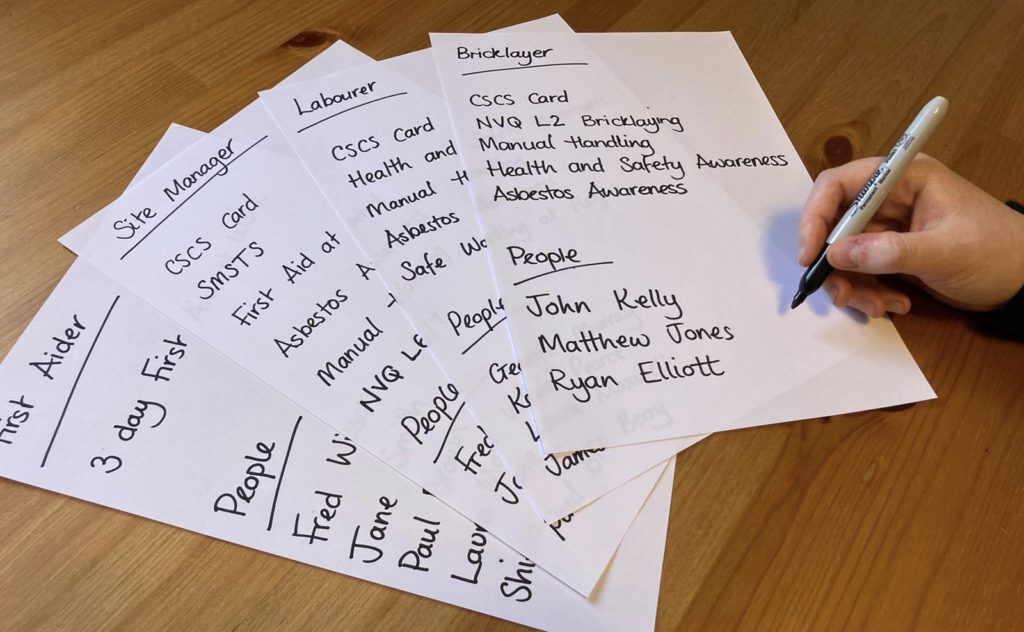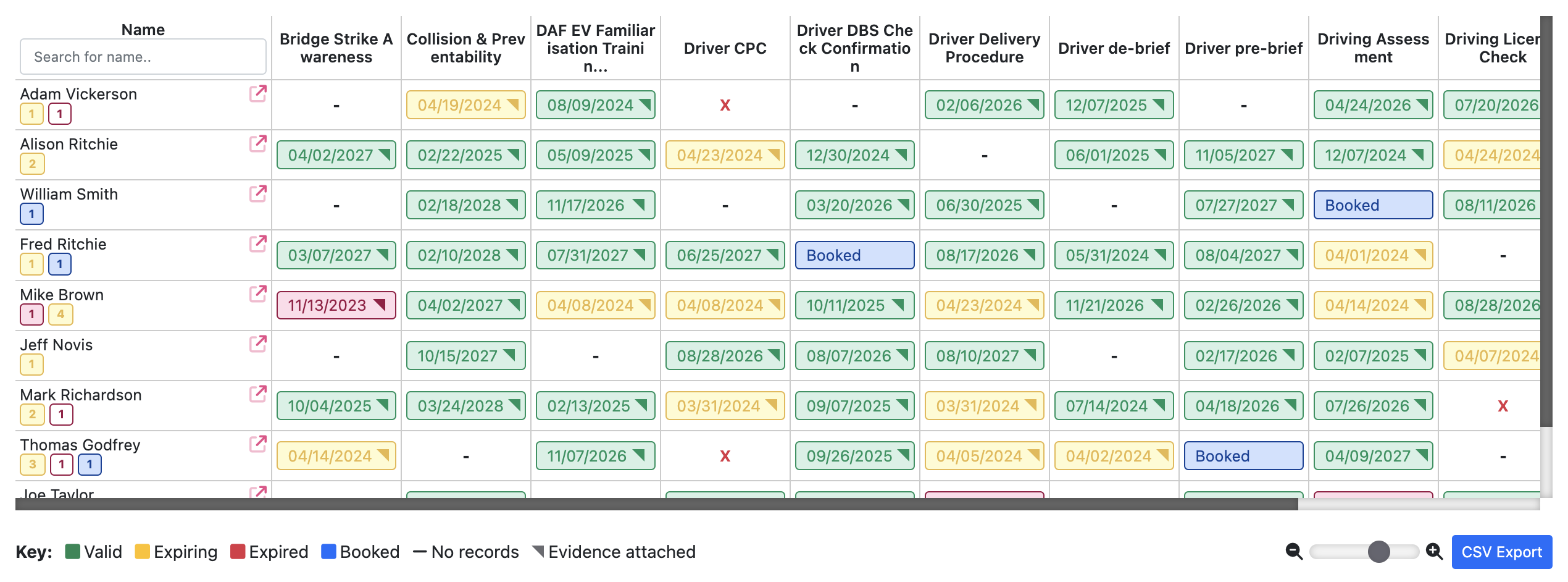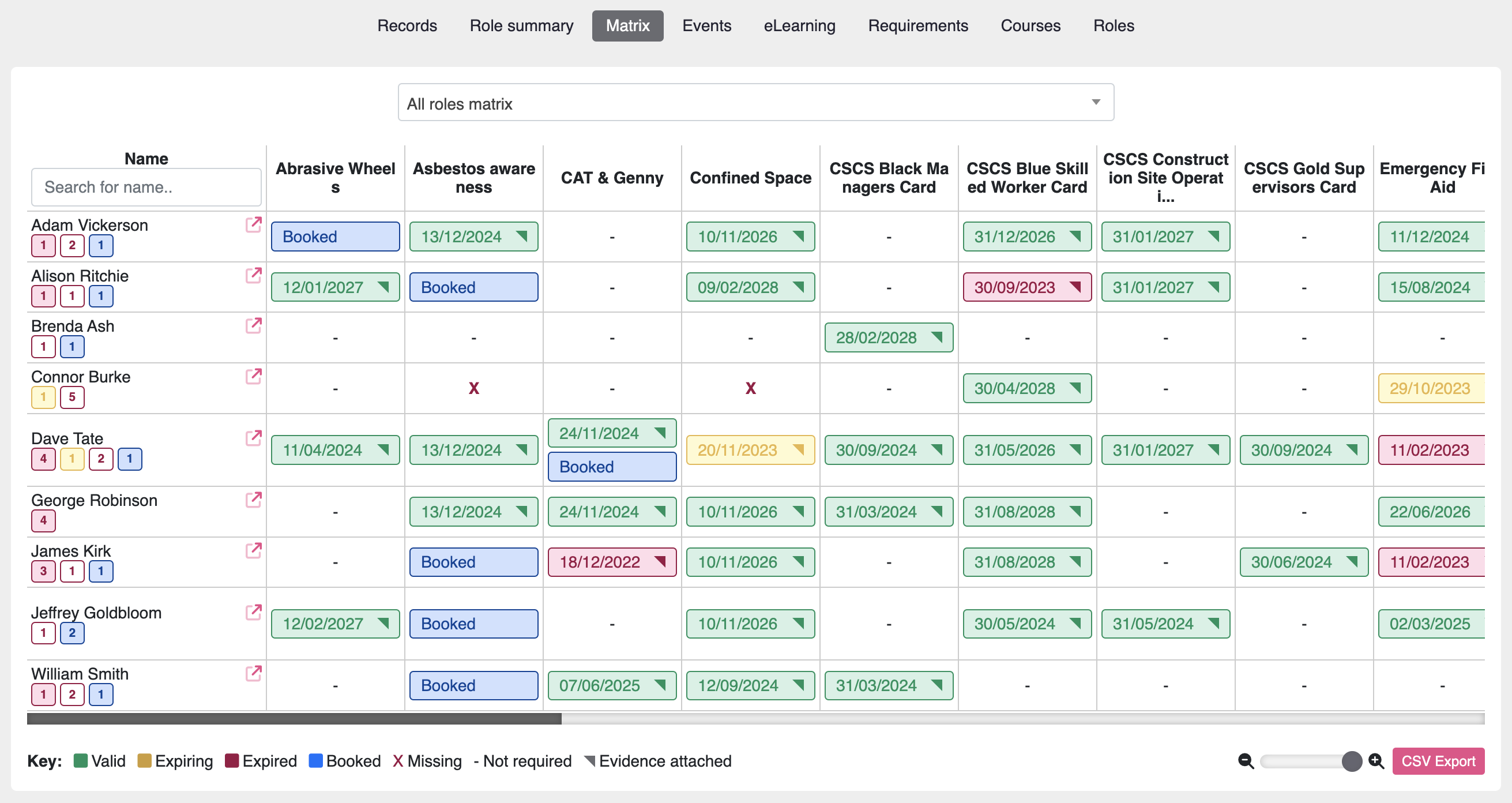With over 10 years of experience as a training coordinator, I’ve conducted numerous Training Needs Analyses (TNA) across various sectors, including hospitality, construction, and manufacturing. In this guide, I’ll share the proven methods I’ve employed to identify and address training requirements within organisations.
What is a Training Needs Analysis?
A Training Needs Analysis (TNA) is a strategic process used to identify and bridge the gap between the current skills, qualifications, and competencies of an organisation’s workforce and those required to perform their roles effectively. This analysis is crucial for enhancing workplace safety, efficiency, and effectiveness, particularly in regulated industries where compliance is mandatory.
The process involves evaluating existing employee capabilities against the desired standards and identifying areas that require improvement through targeted training. According to the Health and Safety Executive (HSE), competence is defined as “the combination of training, skills, experience, and knowledge that a person possesses and their ability to apply them to perform a task safely.” Conducting a TNA not only helps in standardising training across the workforce but also ensures that all personnel are equipped with the necessary skills and knowledge to meet their job requirements safely and efficiently.
For more detailed guidance on training requirements, the HSE website offers a wealth of information. Employers are advised to consult these resources or seek external expertise to fulfil their training obligations effectively.
Consequences of not conducting a Training Needs Analysis (TNA)
The consequences of not conducting a Training Needs Analysis (TNA) can have far-reaching implications for organisations, affecting both their short-term performance and long-term sustainability. Here are some of the key consequences:
- Wasted Resources: Without a TNA, organisations may invest resources in training programs that do not address the specific needs of their workforce. This can result in wasted time, money, and effort on initiatives that fail to produce tangible benefits or improvements in performance.
- Skills Mismatch: One of the most significant consequences of neglecting a TNA is a mismatch between the skills held by employees and the skills required to fulfil organisational objectives. This can lead to inefficiencies, errors, and missed opportunities as employees struggle to perform tasks for which they are ill-prepared.
- Low Employee Morale and Engagement: When employees feel that their training needs are not being met, they may become disengaged and demotivated. A lack of opportunities for skill development and career advancement can lead to frustration and dissatisfaction among employees, ultimately impacting productivity and retention rates.
- Decreased Performance and Competitiveness: In today’s fast-paced business environment, organisations must continuously adapt and innovate to stay competitive. Without a TNA, employees may lack the skills and knowledge necessary to perform their roles effectively, resulting in subpar performance and an inability to keep pace with industry trends and competitors.
- Increased Turnover: Employees who feel undervalued or underutilised are more likely to seek opportunities elsewhere. A failure to address their training needs can contribute to higher turnover rates as talented individuals seek organisations that prioritise their professional development and growth.
- Compliance and Legal Risks: In certain industries, such as healthcare, finance, construction, and manufacturing, failure to provide adequate training can result in compliance violations and legal liabilities. Without proper training, employees may unknowingly engage in practices that violate regulations or compromise safety standards, exposing the organisation to financial penalties and reputational damage.
- Innovation Stagnation: Training needs analysis not only addresses current skill gaps but also identifies future training requirements to support organisational growth and innovation. Without a proactive approach to identifying and developing new skills, organisations risk falling behind competitors and missing out on opportunities for innovation and market expansion.
In summary, the consequences of not conducting a Training Needs Analysis can range from wasted resources and decreased performance to legal risks and decreased competitiveness. By prioritising the TNA as an integral part of their talent management strategy, organisations can ensure that their workforce remains skilled, engaged, and prepared to meet the challenges of the future.
Where do I start?
If you don’t have software to help you, it might be useful to do a pen and paper exercise and jot things down before transferring to a matrix.
- Write the task title at the top of the page. List the names of your workforce carrying out this task and then list the training required. Continue to do this for every task.
- Collate your existing training certificates and transfer your information into a training matrix. We have created a free training matrix template which you can download here.
- Usually, you would list the names of the people in a column along the left of the page. Next list the training/skills or competency in a row along the top. Look at each individual and work through the pages of training requirements, recording whether the training is a requirement for their job role or not. Where there is a requirement, record if the person holds the necessary certificate or qualification and where possible, the expiry date. If there is a requirement and their certificate is missing, record this also.

How do I keep track of all this moving forward?
A training matrix is the best way to collate, monitor and manage your organisation’s training requirements. It displays this information in an orderly and easy to read way. Before creating a matrix, you need to know what information should be included. This is a good opportunity to look at the people in your workforce and the tasks they do. Not just their job titles, but really drill down to specific tasks. Not everyone with the same job title will carry out the same tasks and their training needs will vary. Take a Warehouse Operative for example. They may all need manual handling training. Only some of them will be driving a forklift and that has its own set of training requirements.
Traditionally a training matrix is recorded on a spreadsheet but this can be laborious and time-consuming to keep up to date. Human error and subsequent data loss is a common problem when using spreadsheets. Training management software will simplify and streamline the training need analysis process and automate the training matrix aspect.
We discuss the benefits of creating a training matrix using specialist software versus spreadsheets here.
It’s important to remember that this is a working document and it must be updated regularly to avoid issues arising. If you would like to simplify this process and reduce the risk of issues relating to your training needs. If you would also like to explore more efficient and automated ways of working. I would be happy to show you how Moralbox Workforce Manager can assist you.
Training Needs Analysis Templates
Training Magazine Network provides a quick reference guide for training needs assessment and analysis. The template is designed to help you conduct a needs analysis effectively, even if it’s your first time. You can access the template by becoming a member of their network, which is free. For more details, you can visit their website at Training Magazine Network.
Process Street offers a Training Needs Analysis (TNA) Template designed to help teams identify and address skill gaps effectively. The template includes steps for identifying key stakeholders, gaining top management support, defining competencies and skills required for each role, and more. It provides a structured approach to carry out individual assessments and develop action plans based on identified training needs. You can check out the template and its detailed steps here.

Alison is the Moralbox Customer Success Manager. She ensures that our customers enjoy the benefits and get the very best experience out of our products. Alison has over 8 years experience as a training manager.


